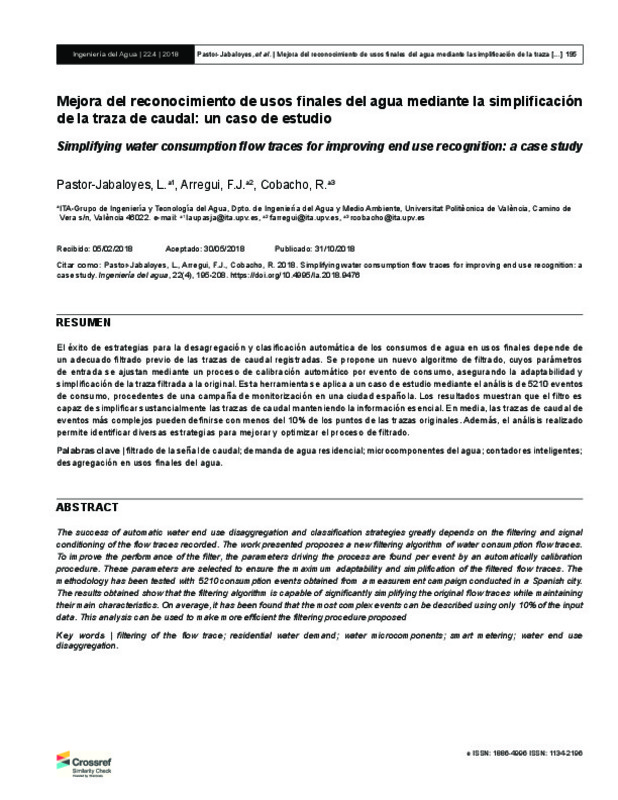JavaScript is disabled for your browser. Some features of this site may not work without it.
Buscar en RiuNet
Listar
Mi cuenta
Estadísticas
Ayuda RiuNet
Admin. UPV
Mejora del reconocimiento de usos finales del agua mediante la simplificación de la traza de caudal: un caso de estudio
Mostrar el registro completo del ítem
Pastor Jabaloyes, L.; Arregui De La Cruz, F.; Cobacho Jordán, R. (2018). Mejora del reconocimiento de usos finales del agua mediante la simplificación de la traza de caudal: un caso de estudio. Ingeniería del Agua. 22(4):195-208. https://doi.org/10.4995/ia.2018.9476
Por favor, use este identificador para citar o enlazar este ítem: http://hdl.handle.net/10251/111876
Ficheros en el ítem
Metadatos del ítem
| Título: | Mejora del reconocimiento de usos finales del agua mediante la simplificación de la traza de caudal: un caso de estudio | |
| Otro titulo: |
|
|
| Autor: | Pastor Jabaloyes, Laura | |
| Entidad UPV: |
|
|
| Fecha difusión: |
|
|
| Resumen: |
[EN] The success of automatic water end use disaggregation and classification strategies greatly depends on the filtering and signal conditioning of the flow traces recorded. The work presented proposes a new filtering ...[+]
[ES] El éxito de estrategias para la desagregación y clasificación automática de los consumos de agua en usos finales depende de un adecuado filtrado previo de las trazas de caudal registradas. Se propone un nuevo algoritmo ...[+]
|
|
| Palabras clave: |
|
|
| Derechos de uso: | Reconocimiento - No comercial - Sin obra derivada (by-nc-nd) | |
| Fuente: |
|
|
| DOI: |
|
|
| Editorial: |
|
|
| Versión del editor: | https://doi.org/10.4995/ia.2018.9476 | |
| Código del Proyecto: |
|
|
| Agradecimientos: |
El trabajo presentado en este artículo ha sido posible gracias al Proyecto IMPADAPT/CGL2013-48424-C2-1-R del Ministerio de Economía y Competitividad de España con fondos FEDER y al VII Programa Marco de la Unión Europea, ...[+]
|
|
| Tipo: |
|









